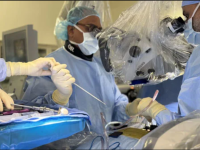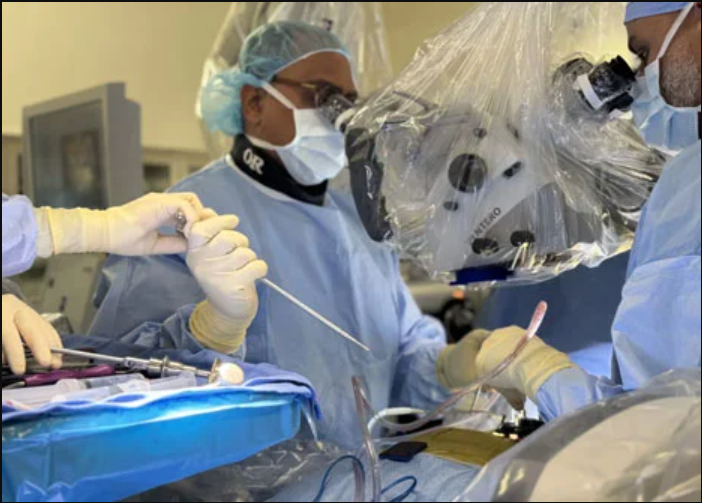The human spine is a masterpiece of biological engineering. It is the central pillar that allows us to stand tall, twist, bend, and move through the world. Yet, because of its complexity and constant workload, the spine is vulnerable to injury, degeneration, and chronic pain.
When back pain escalates from a minor nuisance to a life-altering disability, the expertise of a dedicated spine specialist becomes invaluable. Understanding how your spine works and the precise role of a spine surgeon is the first step toward regaining your quality of life.
This comprehensive guide delves into the anatomy of your back, the conditions that require expert intervention, and the critical criteria for choosing the specialist who can offer the best path forward.
1. The Architectural Marvel: A Closer Look at Your Spine
To appreciate the gravity of a spinal condition, we must first understand its structure. The spine is not a single bone but a stacked column of 33 bones, divided into four main regions:
The Components:
- Vertebrae: The individual bones (cervical, thoracic, and lumbar) that provide structural support and protect the delicate interior.
- Intervertebral Discs: These are crucial shock absorbers located between the vertebrae. They are tough, fibrous outer layers containing a gel-like center (nucleus pulposus), allowing for flexibility and cushioning impact.
- The Spinal Cord and Nerves: Running through the protective vertebral canal, the spinal cord is the primary pathway for communication between the brain and the rest of the body. Spinal nerves branch out at each level, transmitting motor and sensory signals to the limbs and organs.
- Ligaments, Tendons, and Muscles: A complex network of supporting soft tissues stabilizes the column and facilitates movement.
When any one of these components is compromised—whether due to trauma, arthritis, or age—the entire system is thrown into disarray, often resulting in agonizing or debilitating pain.
2. Common Adversaries: When the Spine Falters
Spinal issues can manifest as acute injuries or chronic, progressive degeneration. A spine surgeon is trained to diagnose and treat the full spectrum of these conditions.
Degenerative Conditions:
- Herniated Disc: Often called a “slipped disc,” this occurs when the fibrous outer ring of the disc tears, allowing the jelly-like center to push out. If this material compresses a nearby nerve root, it can cause severe pain, numbness, or weakness (e.g., sciatica).
- Spinal Stenosis: The narrowing of the spinal canal or the nerve root openings. This crowding puts pressure on the spinal cord or nerves, often causing pain in the legs when walking.
- Degenerative Disc Disease (DDD): A natural process where discs lose height and hydration over time, resulting in instability and pain.
- Spondylolisthesis: A condition where one vertebra slips forward over the vertebra below it.
Structural and Traumatic Conditions:
- Scoliosis and Kyphosis: Abnormal curvature of the spine (Scoliosis is lateral curvature; Kyphosis is excessive forward rounding). Severe cases may require surgical correction.
- Vertebral Fractures: Traumatic injuries or fractures caused by osteoporosis (compression fractures) that destabilize the spinal column.
3. The Path to Relief: When is Surgery the Answer?
It is critical to understand that spine surgeons are not solely focused on surgery. A great specialist adheres to the principle of conservative care first. The primary goal is pain relief and functional restoration, which usually begins with non-invasive methods.
The Stages of Treatment:
- Initial Conservative Management (4-12 weeks): This phase typically includes physical therapy, anti-inflammatory medications, rest (briefly), and lifestyle modifications.
- Intermediate Non-Surgical Treatment: If pain persists, the team may utilize specialized interventions, such as epidural steroid injections or facet joint blocks, to reduce inflammation and confirm the exact source of the pain.
Only after a comprehensive trial of non-surgical therapies has failed, or if the patient presents with immediate neurological deficits (such as progressive weakness or loss of bowel/bladder control), is surgery considered. Surgery is reserved for mechanical or neurological problems that cannot be solved any other way.
4. The Role of the Spine Surgeon: The Ultimate Specialist
A spine surgeon is a physician specialized in the diagnosis and surgical treatment of spinal disorders. They may come from two distinct backgrounds, both highly qualified:
- Orthopedic Spine Surgeons: Specialize in musculoskeletal issues, focusing on bone, joint, and soft tissue anatomy.
- Neurosurgeons: Specialize in the nervous system, focusing heavily on the spinal cord, nerves, and brain.
Both types of physicians undergo intensive fellowship training dedicated exclusively to the spine, making them deeply knowledgeable about complex anatomy and critical decision-making.
Key Responsibilities of a Spine Surgeon:
- Advanced Diagnosis: Using state-of-the-art imaging (MRI, CT scans) and physical exams to pinpoint the exact cause of pain.
- Conservative Oversight: Guiding the conservative treatment plan to ensure the patient avoids unnecessary procedures.
- Surgical Intervention: Performing delicate, precise procedures ranging from minimally invasive fusions and disc removals (microdiscectomy) to complex deformity corrections.
5. Identifying Excellence: Choosing Your Spine Specialist
When dealing with the central support system of your body, the stakes are high. If conservative treatments have failed and surgery is indicated, selecting the right specialist is the most crucial decision you will make. This is especially true in a highly competitive medical environment like New York, where standards for expertise and technological access are incredibly elevated.
If you are searching for the best spine surgeon in New York, here are the non-negotiable criteria for selection:
A. Fellowship Training and Specialization
Look beyond general certifications. A top-tier surgeon will have completed a dedicated, post-residency fellowship focused exclusively on spine surgery. They should specialize in the specific type of procedure you require (e.g., minimally invasive techniques, complex cervical reconstruction, deformity correction).
B. Experience and Volume
A high volume of successful outcomes is essential. Inquire how often the surgeon performs the recommended procedure. Experience breeds efficiency and reduces complications—a critical factor in spinal health.
C. Technologically Advanced Approach
The best surgeons utilize modern techniques to improve recovery and minimize tissue damage. Look for expertise in:
- Minimally Invasive Surgery (MIS): Techniques that use smaller incisions, leading to less blood loss, less muscle disruption, and a faster return home.
- Intraoperative Navigation & Robotics: Use of advanced imaging and guided robotics during surgery to increase precision and safety.
D. Integrated, Patient-Centered Care
The surgeon should be part of a comprehensive team that includes pain management specialists, physical therapists, and rehabilitation experts. They should focus on treating the whole patient, not just the pathology visible on an X-ray. Crucially, they must be excellent communicators, ensuring you fully understand the risks, benefits, and alternatives before consenting to surgery.
Conclusion
The health of your spine dictates the quality of your life. While the thought of spinal intervention can be daunting, modern medicine offers sophisticated, effective solutions for conditions that were once considered untreatable.
Understanding your anatomy and exhaustively pursuing non-surgical options is vital. However, when the time comes to consider surgical relief, partnering with a highly skilled, experienced spine surgeon is paramount. By focusing on board certification, specialized fellowship training, and a patient-first approach, you can confidently navigate your journey toward a life free from chronic, debilitating back pain.






















0 Comments